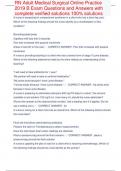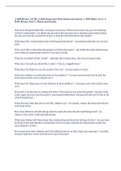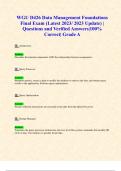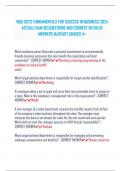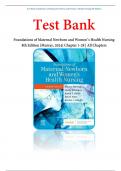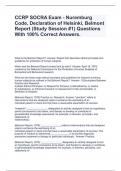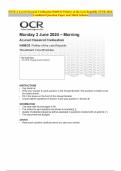Tentamen (uitwerkingen)
NSG530 / NSG 530 Exam 1 (Latest 2024 / 2025): Advanced Pathophysiology | Questions and Verified Answers | 100% Correct | Grade A - Wilkes
- Vak
- Instelling
Exam 1: NSG530 / NSG 530 (Latest 2024 / 2025) - Advanced Pathophysiology Exam | Questions and Verified Answers | 100% Correct | Grade A - Wilkes Q: When antibodies are formed against red blood cell antigens of the Rh system, how are the blood cells destroyed? a. Complement-mediated cell lysis b. Ph...
[Meer zien]




